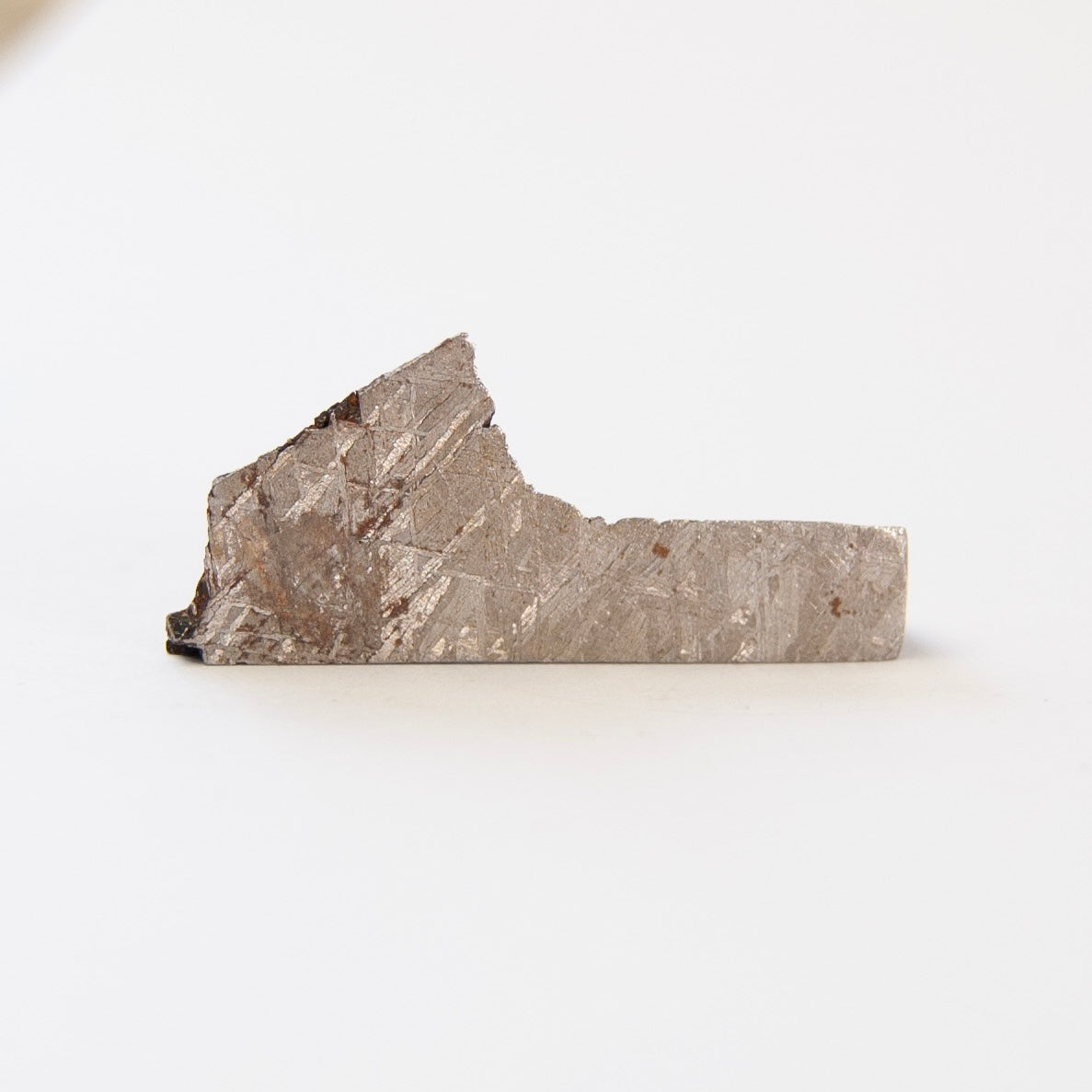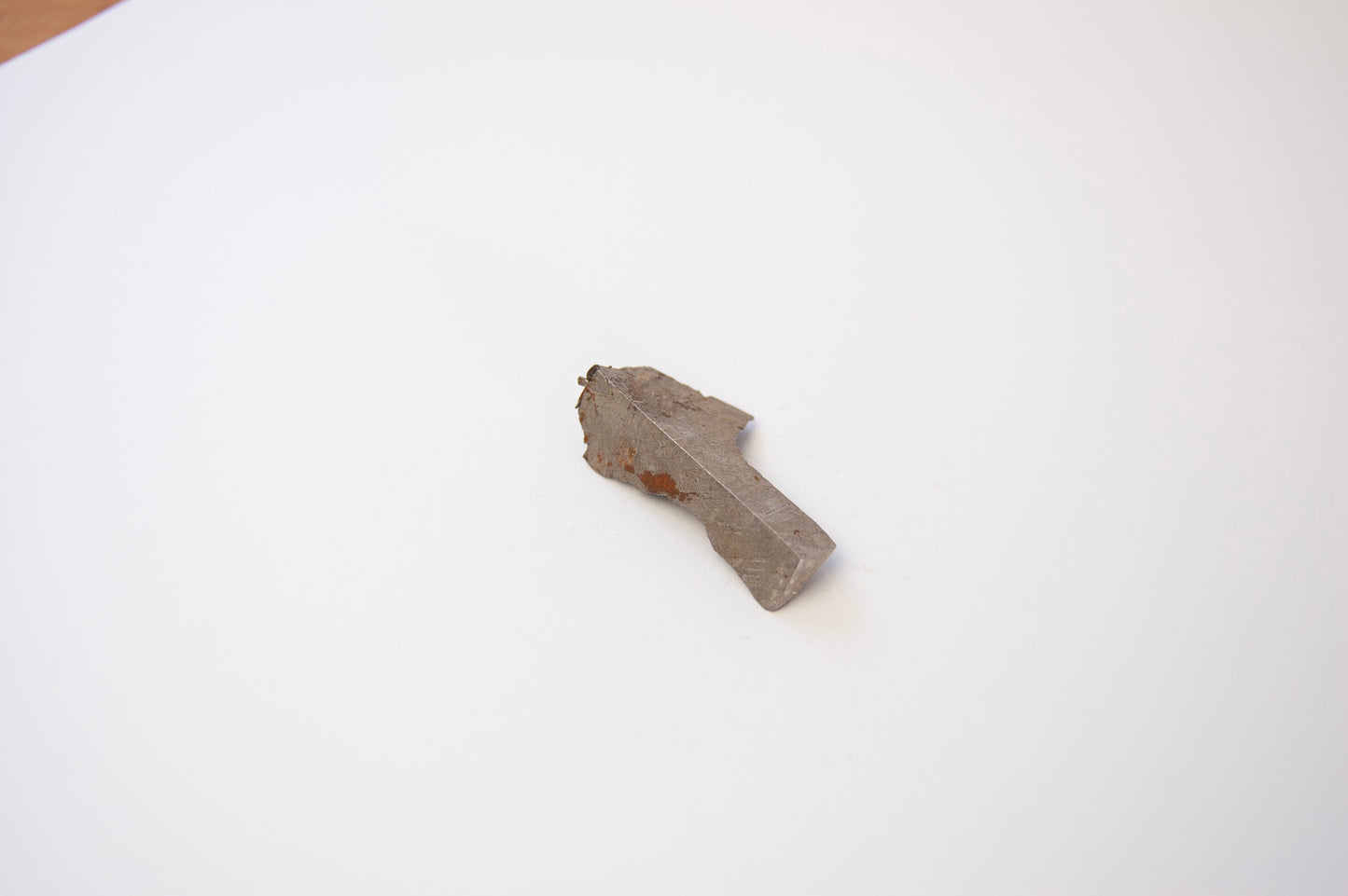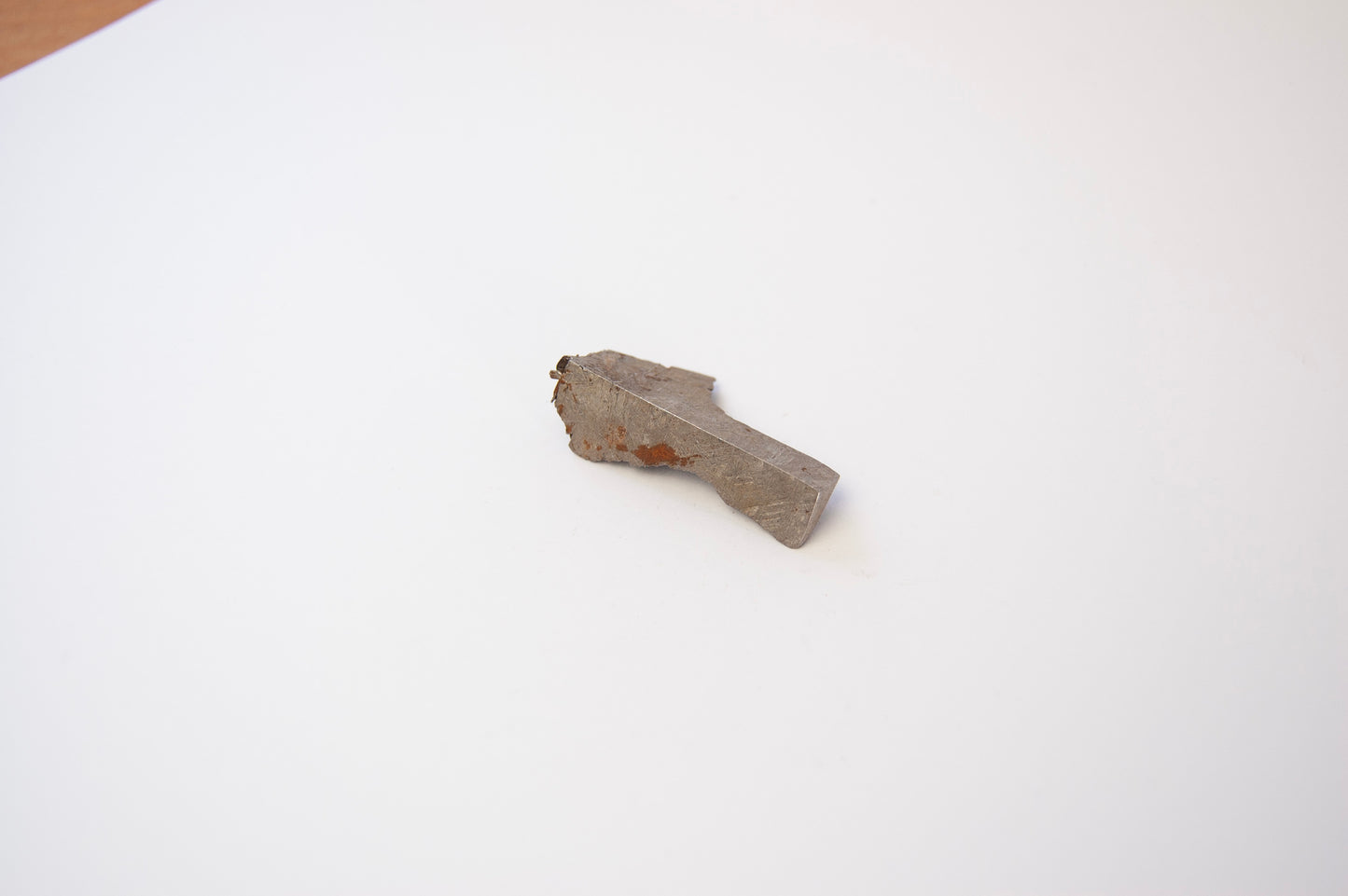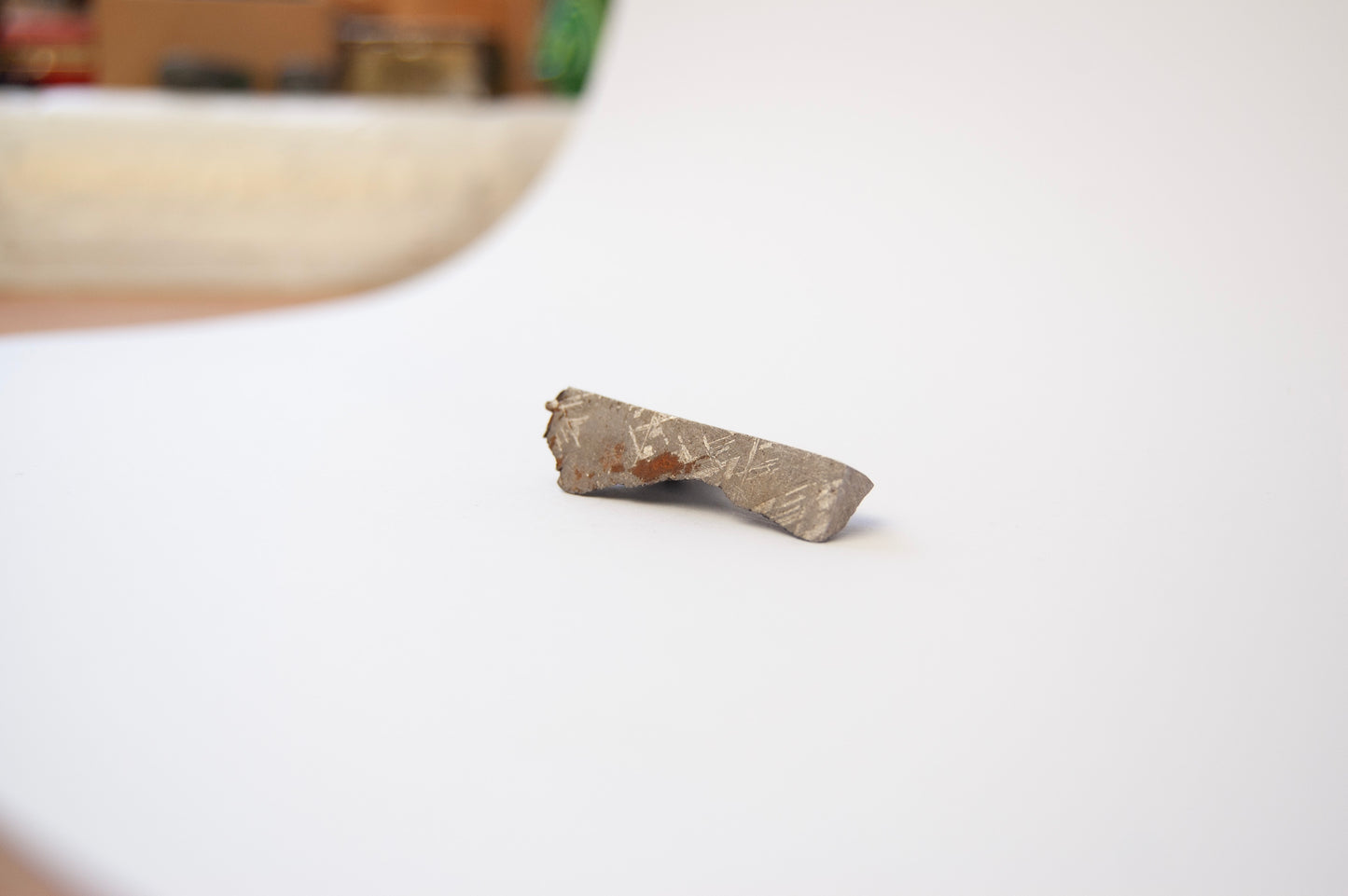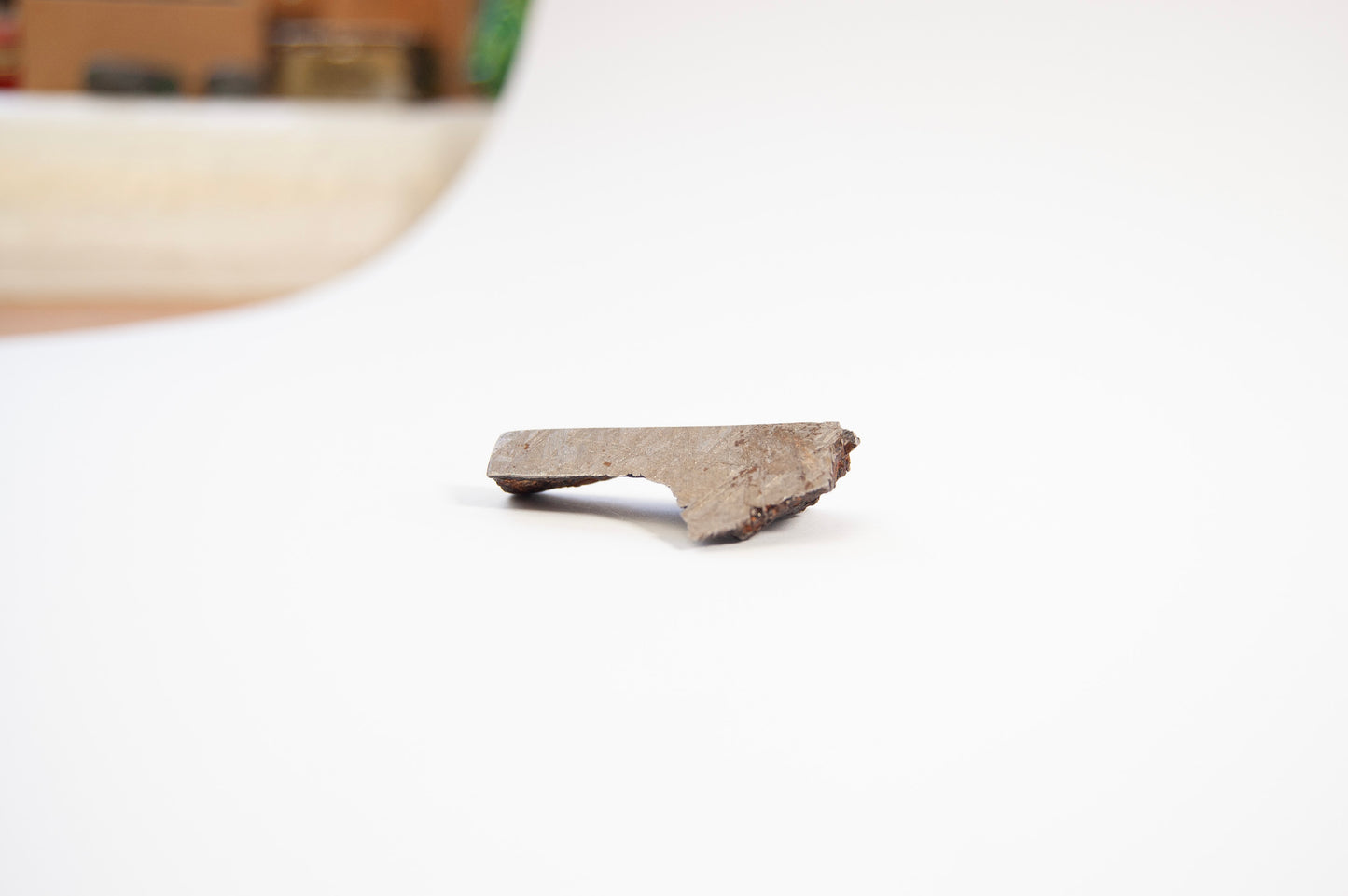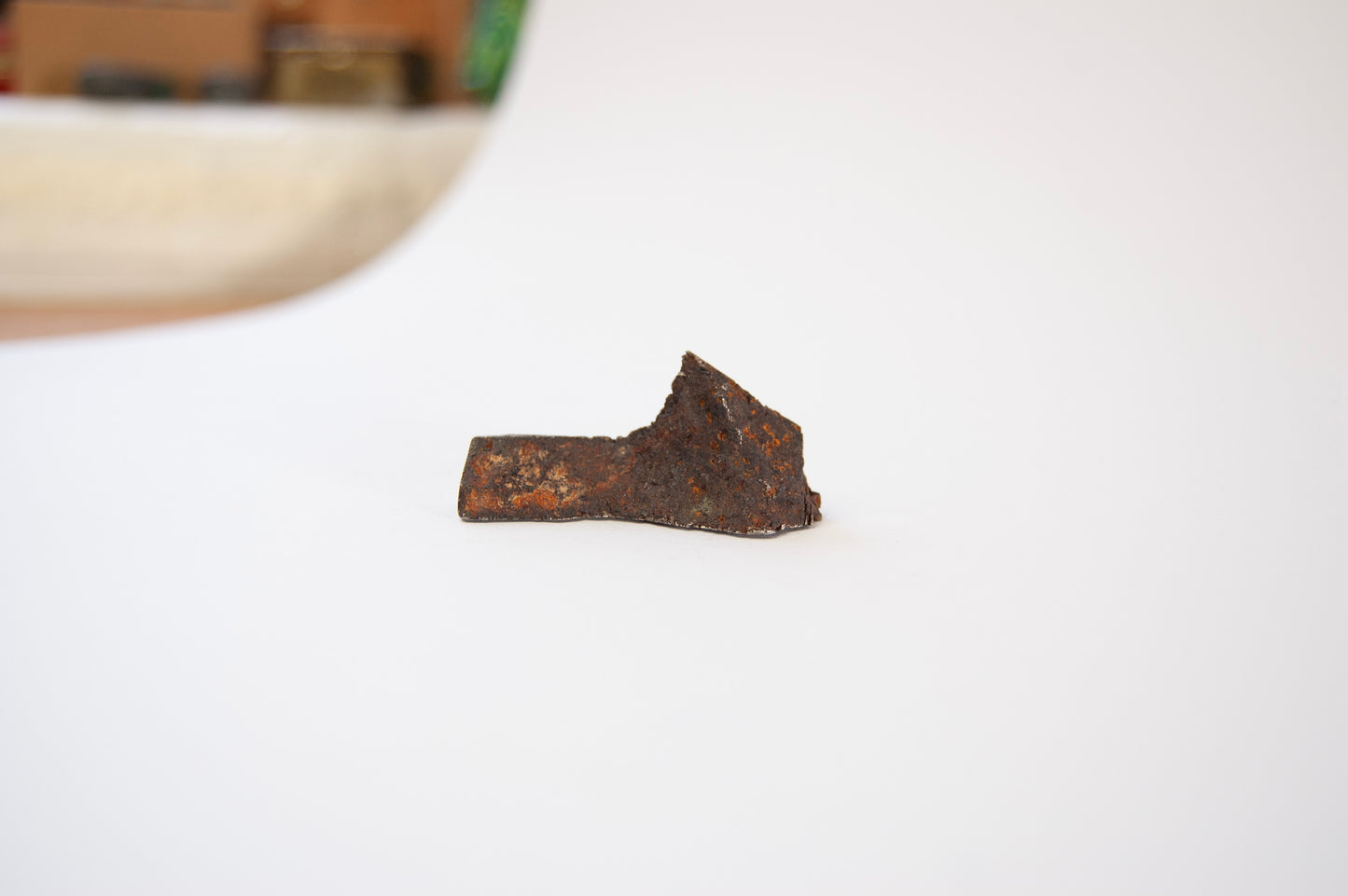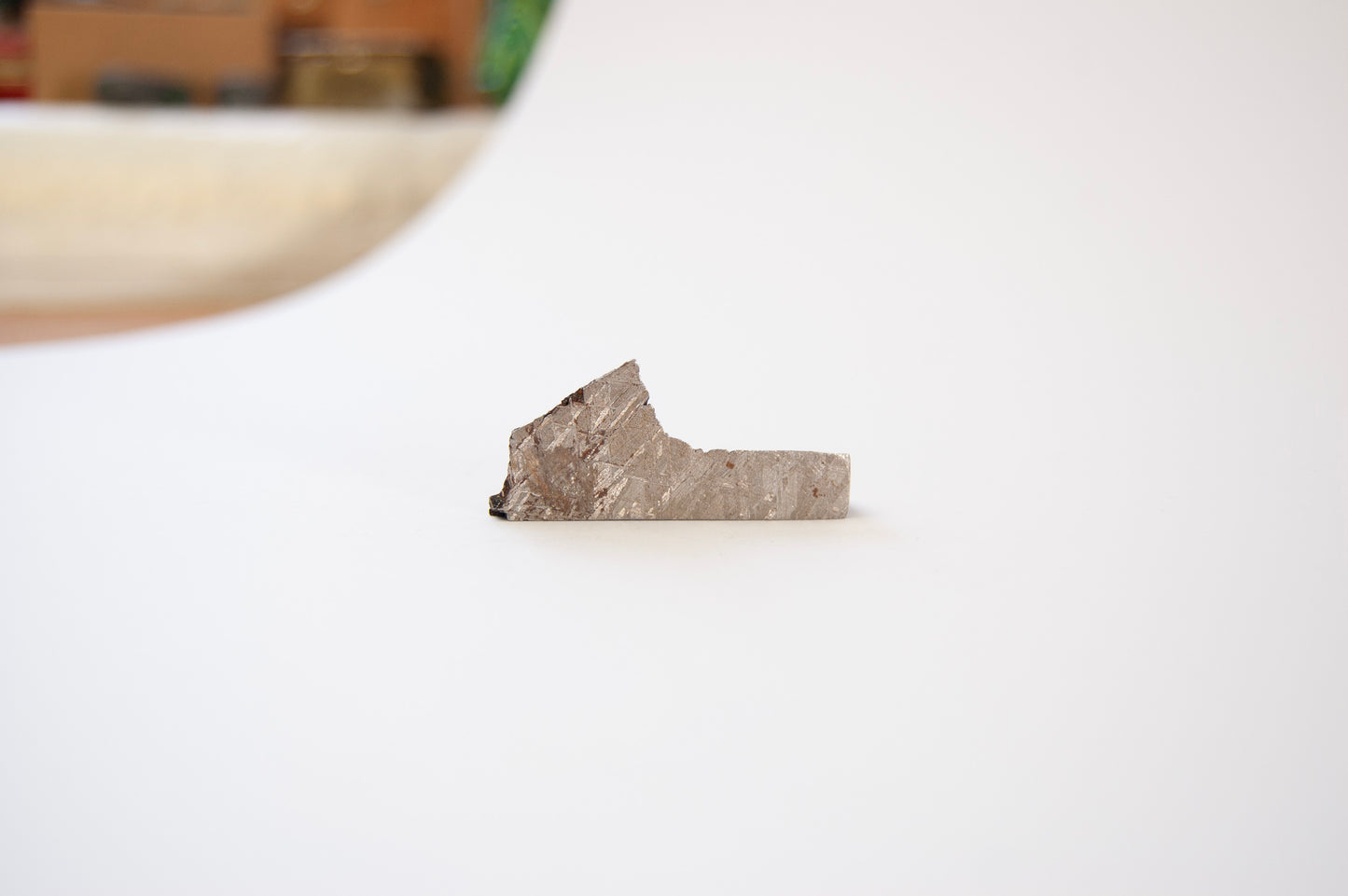Get Stoned
Gibeon Meteorite
Gibeon Meteorite
Couldn't load pickup availability
Share
Own your very own piece of space rock!
About this Meteorite
This piece fell in the Kalahari Desert. It formed 4.5 billion years ago, and landed on earth about 3.3 million years ago. Indigenous tribespeople would form these hard rocks into spear points and tools. It is named after the local town where it was discovered, Gibeon in Namibia.
It was formed from the molten core of an asteroid located between Mars and Jupiter whose shattered remains are part of the asteroid belt.
Gibeon Meteorite
This piece (pictured) fell in the Kalahari Desert. It formed 4.5 billion years ago, and landed on earth about 3.3 million years ago. Indigenous tribespeople would form these hard rocks into spear points and tools. It is named after the local town where it was discovered, Gibeon in Namibia.
This triangular pattern is called Widmanstätten. The meteorite has been sliced and drenched in a weak acid to show off the crystalline structure of the different alloys.
Widmanstätten pattern, lines that appear in some iron meteorites when a cross section of the meteorite is etched with weak acid. The pattern is named for Alois von Widmanstätten, a Viennese scientist who discovered it in 1808. It represents a section through a three-dimensional octahedral structure in the metal that is formed of bands of kamacite with narrower borders of taenite, the meshes being filled with a mixture of these two alloys.
Dimensions
This meteorite is 17g and at the widest part is 43mm.
Meteorites
Iron meteorites are space rocks made mostly of iron with a bit of nickel mixed in. When they fall through Earth’s atmosphere, they often form a thin black crust that can rust over time. Even though only around 5% of seen meteorite falls are iron, they’re easier to spot and survive much longer in the ground than other types—so they’re found more often than stony or stony-iron meteorites
When space rocks—called meteors—make it all the way to the ground, they’re then known as meteorites.
About the Gibeon Meteorites
The Gibeon meteorite scattered its fragments across a huge area—an elliptical stretch about 390 km long and 120 km wide—making it the largest known strewn field in the world. At the heart of this area is the village of Gibeon in Namibia’s Hardap Region. Over the years, around 100 to 150 fragments have been discovered, and people still occasionally find more today. Between 1836 and 1930, about 54 pieces weighing a total of 15 tons were recovered, with the total known weight now around 25 tons.
The story of Gibeon’s discovery starts in 1836, when English captain J. E. Alexander picked up some samples near the Fish River and sent them to London. There, they were studied by astronomer John Herschel, who confirmed for the first time that the material came from outer space.
More Reading
American Museum of Natural history: https://www.amnh.org/exhibitions/permanent/meteorites/meteorites/stone-and-iron-from-space/irons/gibeon
Entry on MinDat: https://www.mindat.org/loc-31077.html
Items will be sent be sent by Royal Mail Tracked 48. Postage is £3.
